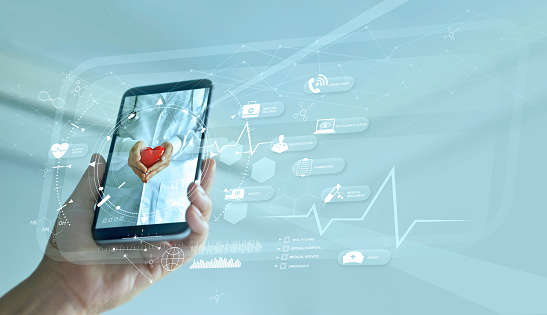Telemedicine, often referred to as "healing at a distance," is a broad term encompassing various activities related to healthcare delivery, education, research, health surveillance, and public health promotion. The American Telemedicine Association defines it as the natural evolution of healthcare in the digital world.
The World Health Organization (WHO) defines telemedicine as the delivery of healthcare services, particularly when distance is a critical factor, using information and communication technologies. It encompasses diagnosis, treatment, prevention, research, education, and continuous healthcare provider training, all aimed at advancing individual and community health.
The concept of telemedicine has historical roots, with the earliest published record dating back to the first half of the 20th century when ECG data was transmitted over telephone lines. Over time, telemedicine has evolved significantly, driven by advancements in technology and communication infrastructure.
Telemedicine has found applications in various contexts, including disaster management, where it played a crucial role during events like earthquakes. With the advent of wireless broadband technology, the widespread use of cell phones and the internet, patient education, medical image transfer, and real-time audio and video consultations have become feasible and cost-effective.
Interactive telemedicine services allow immediate advice and consultation with healthcare professionals, although it is not a substitute for in-person medical consultation. The responsibility for any data transmission effects or losses typically lies with the patient or user.
While telemedicine has vast potential, its growth has been somewhat limited due to factors like lack of awareness and acceptance among the public and healthcare professionals. However, governments are increasingly recognizing its value in public health, leading to a gradual increase in its utilization.
In the context of the COVID-19 pandemic, telemedicine has become particularly relevant as it allows individuals, especially those at high risk, to access medical advice without physical contact. It also supports social distancing efforts by reducing the need for in-person medical appointments, thus helping to limit the spread of the virus.
In conclusion, telemedicine has the potential to address a wide range of healthcare challenges, but its full realization depends on increasing awareness, acceptance, and support from both the public and healthcare providers. It has become especially important during the COVID-19 pandemic as a means of ensuring healthcare access while minimizing the risk of viral transmission.
FAQ
Telemedicine refers to the use of information technologies and electronic communications to provide remote clinical services to patients. The digital transmission of medical imaging, remote medical diagnosis and evaluations, and video consultations with specialists are all examples of telemedicine
The digital transmission of medical imaging, remote medical diagnosis and evaluations, and video consultations with specialists are all examples of telemedicine
Interactive services can provide immediate advice to patients who require medical attention. There are several different mediums utilized for this purpose, including phone, online and home visits. A medical history and consultation about presenting symptoms can be undertaken, followed by assessment like those usually conducted in face-to-face appointments
Telehealth, the virtual care platforms that allow health care professionals and patients to meet by phone or video chat, seems tailor-made for this moment in time. Also known as telemedicine or digital health, it’s often touted as a convenience for patients who are busy or far away, or when travel isn’t feasible due to severe weather or an urgent condition like a stroke. The current crisis makes virtual care solutions like telehealth an indispensable tool as COVID-19 spreads across the world.
CONSULT AIOR FOR ORTHOPAEDICS PROBLEMS
Call Now 0612 2354130, +91 8448441016 and receive Top Quality Healthcare for you and your Family


